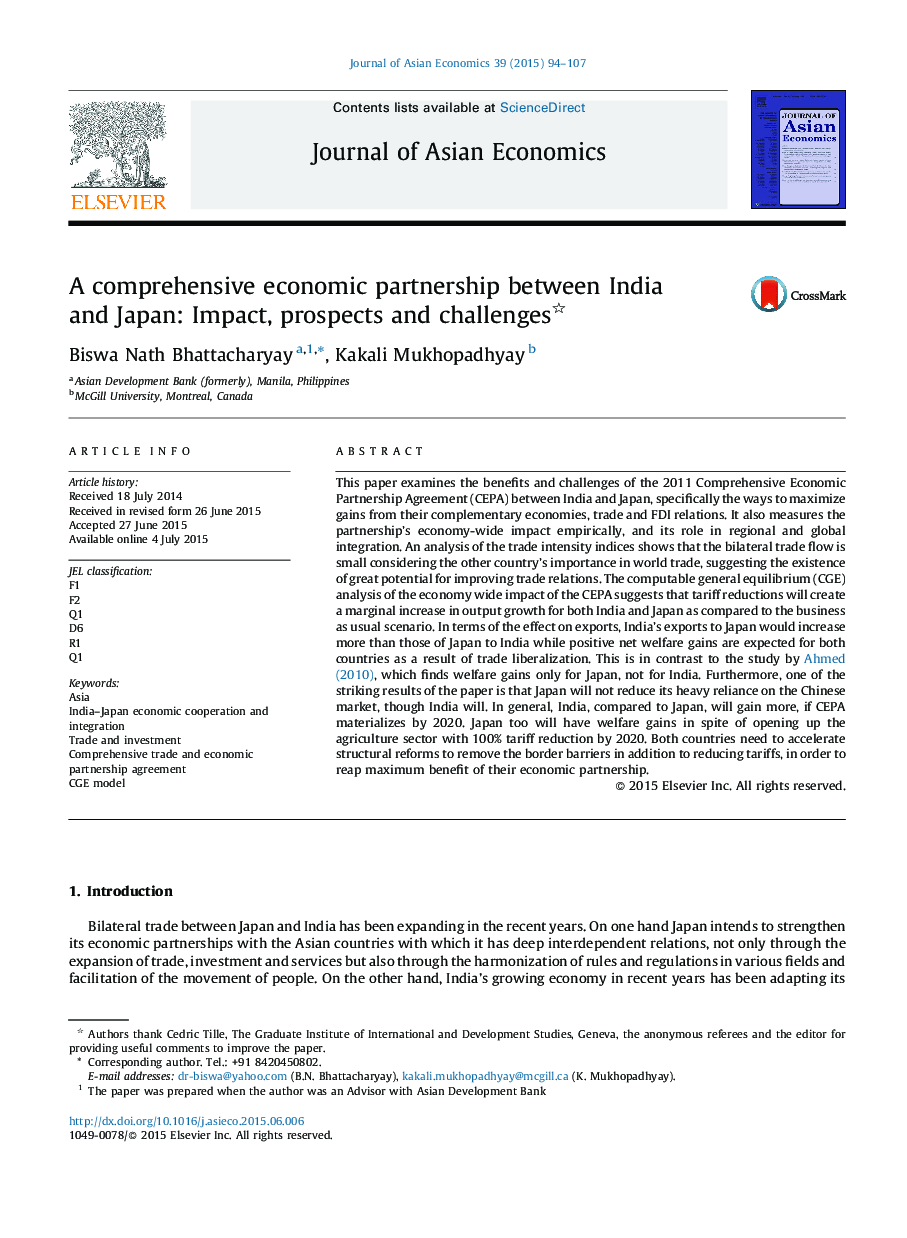| کد مقاله | کد نشریه | سال انتشار | مقاله انگلیسی | نسخه تمام متن |
|---|---|---|---|---|
| 5087246 | 1478253 | 2015 | 14 صفحه PDF | دانلود رایگان |

- We examine the economy-wide impact of the CEPA between India and Japan through economic and CGE analysis;.
- Tariff reductions will create a marginal increase in output growth for both countries;.
- India's exports to Japan would increase more than those of Japan to India;.
- Positive net welfare gains are expected for both countries as a result of trade liberalization;.
- Japan will not reduce its heavy reliance on the Chinese market, though India will. In general, India, compared to Japan, will gain more if CEPA materializes by 2020;.
- Both countries need to accelerate structural reforms to remove behind the border barriers in addition to reducing tariffs, in order to reap maximum benefit of their economic partnership.
This paper examines the benefits and challenges of the 2011 Comprehensive Economic Partnership Agreement (CEPA) between India and Japan, specifically the ways to maximize gains from their complementary economies, trade and FDI relations. It also measures the partnership's economy-wide impact empirically, and its role in regional and global integration. An analysis of the trade intensity indices shows that the bilateral trade flow is small considering the other country's importance in world trade, suggesting the existence of great potential for improving trade relations. The computable general equilibrium (CGE) analysis of the economy wide impact of the CEPA suggests that tariff reductions will create a marginal increase in output growth for both India and Japan as compared to the business as usual scenario. In terms of the effect on exports, India's exports to Japan would increase more than those of Japan to India while positive net welfare gains are expected for both countries as a result of trade liberalization. This is in contrast to the study by Ahmed (2010), which finds welfare gains only for Japan, not for India. Furthermore, one of the striking results of the paper is that Japan will not reduce its heavy reliance on the Chinese market, though India will. In general, India, compared to Japan, will gain more, if CEPA materializes by 2020. Japan too will have welfare gains in spite of opening up the agriculture sector with 100% tariff reduction by 2020. Both countries need to accelerate structural reforms to remove the border barriers in addition to reducing tariffs, in order to reap maximum benefit of their economic partnership.
Journal: Journal of Asian Economics - Volume 39, August 2015, Pages 94-107